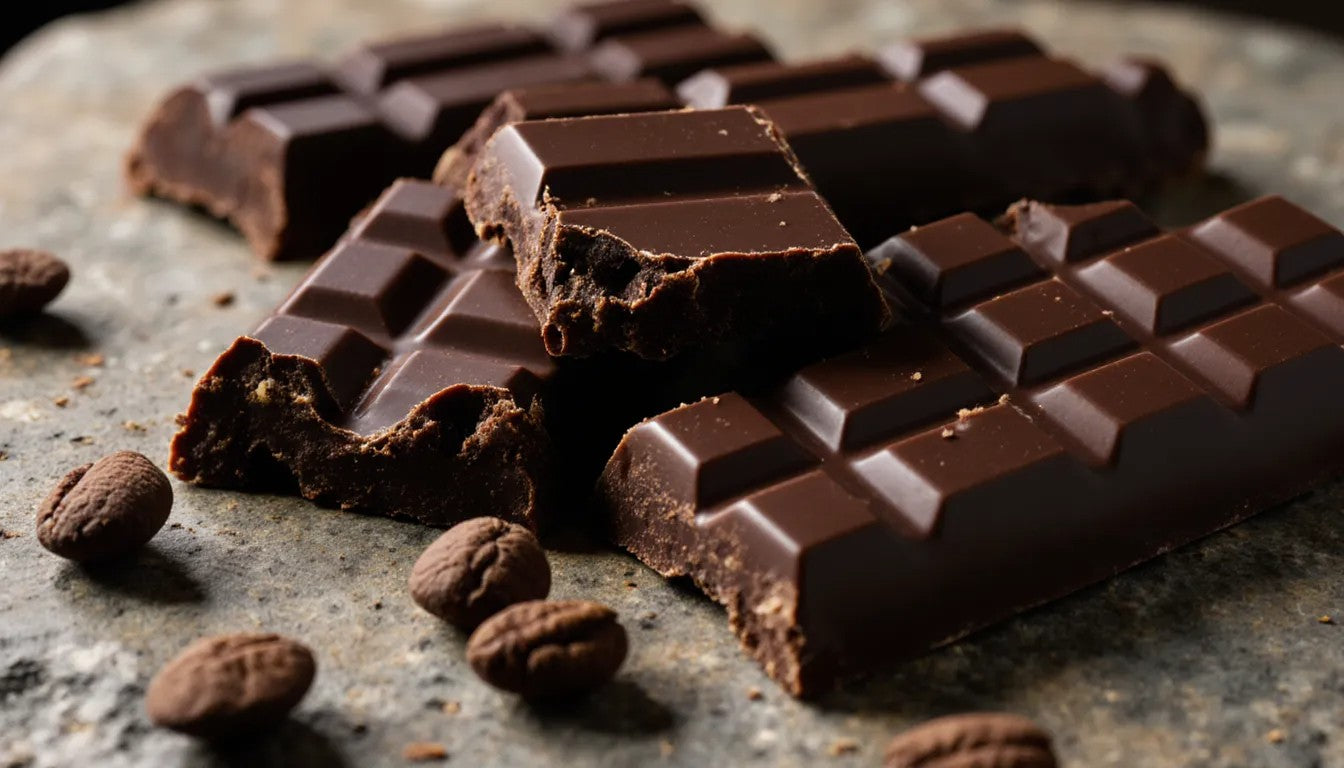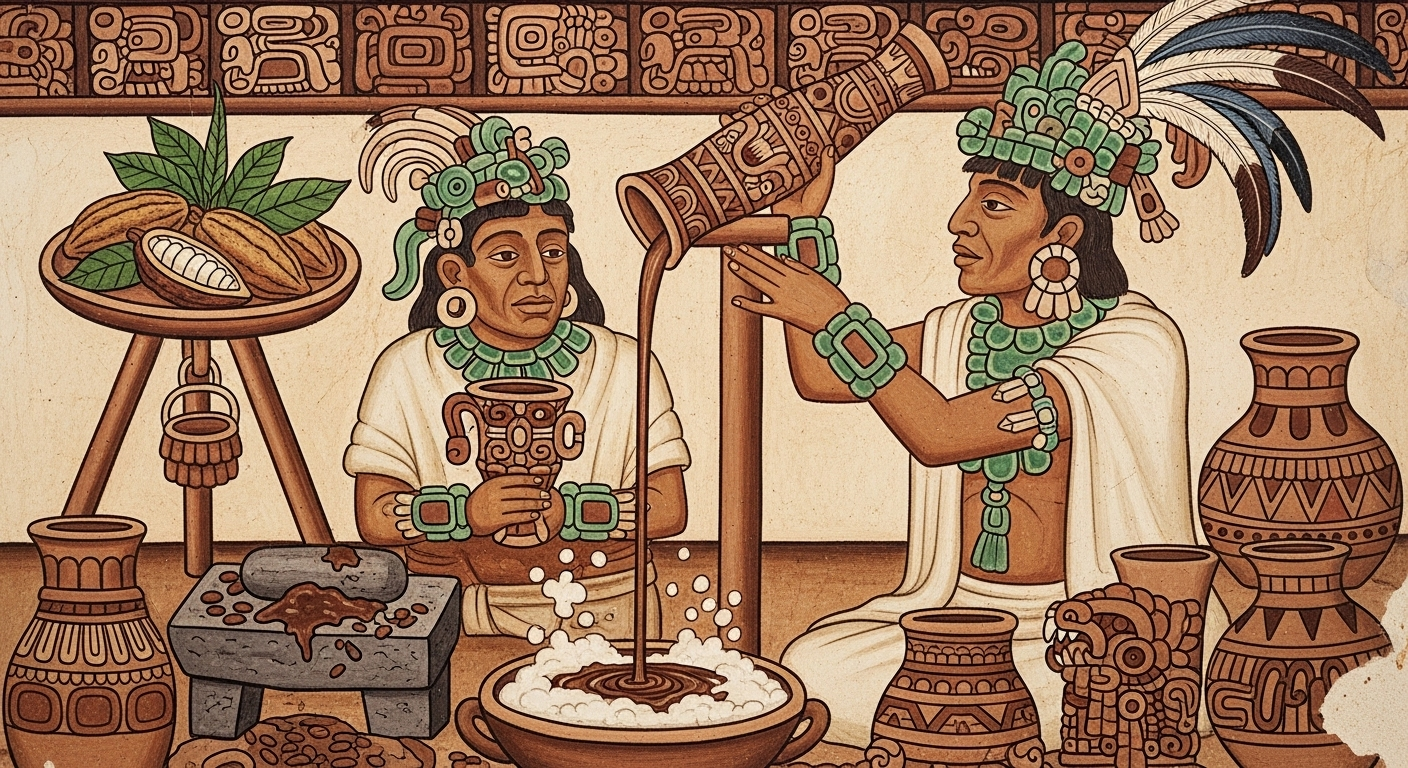
High Cocoa Dark Chocolate: The Complete Guide to Benefits, Selection, and Enjoyment
In the world of chocolate, there's a clear hierarchy of quality and nutritional value, with high cocoa dark chocolate sitting proudly at the summit. Far more than just a sweet treat, chocolate with elevated cocoa percentages (70% and above) represents a fascinating intersection of culinary art, ancient tradition, and modern nutritional science. At Coracao Confections, we're passionate about creating exceptional high cocoa chocolate experiences that honor the rich heritage of cacao while embracing contemporary understanding of its remarkable properties.
What Defines High Cocoa Dark Chocolate?
High cocoa dark chocolate is distinguished primarily by its cocoa percentage – typically 70% or higher, with premium varieties often ranging between 75% and 85%, and some specialty bars reaching an intense 90-100%. This percentage indicates the proportion of the bar derived directly from the cacao bean (both cocoa solids and cocoa butter), with the remaining percentage consisting of sweeteners and sometimes additional ingredients like vanilla or salt.
The higher the cocoa percentage, the more pronounced the complex flavor notes of the cacao itself and the less sweet the chocolate. Unlike milk chocolate (typically 30-45% cocoa) or even lower percentage dark chocolates (50-65%), high cocoa varieties offer a more authentic expression of cacao's natural characteristics – allowing you to experience chocolate in its most noble form.

The Science-Backed Benefits of High Cocoa Chocolate
High cocoa dark chocolate isn't just a delight for your taste buds – it's also remarkably beneficial for your overall wellbeing. The higher the cocoa percentage, the greater the concentration of beneficial compounds and the lower the sugar content, creating a more healthful chocolate experience.
Rich Source of Antioxidants
High cocoa chocolate contains an impressive array of antioxidants, particularly flavanols and polyphenols. These powerful compounds help combat oxidative stress in the body by neutralizing harmful free radicals. In fact, our 81% Stone Ground Dark Chocolate contains more antioxidants than many so-called "superfoods," making it a delicious way to boost your daily antioxidant intake.
Heart Health Support
Numerous studies have linked regular consumption of high cocoa dark chocolate with cardiovascular benefits. The flavanols in dark chocolate can support healthy blood flow, help maintain flexible arteries, and may contribute to balanced blood pressure. Research published in prestigious medical journals has demonstrated that modest consumption of high-quality dark chocolate (particularly varieties with 70%+ cocoa) correlates with reduced risk of heart disease.
Mood Enhancement
There's a reason people reach for chocolate when they need a lift – high cocoa chocolate contains several compounds that positively influence mood and brain function. These include small amounts of caffeine and theobromine (gentle stimulants), phenylethylamine (PEA, often called the "love chemical"), and anandamide (known as the "bliss molecule"). Together, these compounds can promote feelings of alertness, focus, and general wellbeing.
Mineral Content
High cocoa dark chocolate contains significant amounts of essential minerals that many people don't get enough of. A quality 70-85% dark chocolate provides impressive amounts of iron, magnesium, copper, manganese, and zinc. For example, a 1-ounce portion of 85% dark chocolate provides nearly 20% of the recommended daily intake for magnesium – a mineral essential for over 300 biochemical reactions in the body.

How High Cocoa Chocolate Is Made: From Bean to Bar
The journey from cacao tree to high-percentage dark chocolate bar involves numerous critical steps that influence the final flavor, texture, and quality. Understanding this process helps you appreciate why not all high cocoa chocolates are created equal.
The Cacao Bean's Origin
The story begins with the cacao tree (Theobroma cacao), which produces football-shaped pods containing beans. Like wine grapes, cacao beans express terroir – the unique environmental factors of where they're grown. Beans from different regions develop distinctive flavor profiles:
- Central and South American beans often feature bright, fruity notes
- African beans typically offer robust, earthy qualities
- Southeast Asian beans frequently present floral, spicy characteristics
At Coracao, we carefully source our beans from sustainable operations that prioritize both environmental stewardship and fair compensation for farmers.
The Critical Fermentation Process
After harvest, cacao beans undergo fermentation – a crucial step that develops the complex flavor precursors. During this process, the pulp surrounding the beans breaks down, and various biochemical reactions transform the beans' composition. Proper fermentation is an art that requires precise temperature control and timing, typically lasting 5-7 days.
Drying, Roasting, and Winnowing
The fermented beans are then dried (usually in the sun), which reduces moisture and prevents mold growth. Next comes roasting – a step that further develops flavor through Maillard reactions. Different roasting temperatures and times create vastly different flavor profiles. After roasting, the outer shell is removed through winnowing, leaving behind the prized cacao nibs.
Grinding and Conching
The nibs are ground into a paste called chocolate liquor (despite the name, it contains no alcohol). For high cocoa dark chocolate, this paste is combined with cocoa butter (the natural fat from cacao beans) and minimal sweetener. The mixture undergoes conching – a prolonged mixing and aerating process that develops flavor and creates smooth texture. Our stone ground chocolate takes a different approach, using traditional granite stone grinders that preserve more of the cacao's natural character and nutritional compounds.
Tempering and Molding
Finally, the chocolate is tempered – carefully heated and cooled to precise temperatures – to ensure the cocoa butter crystallizes properly. This gives the finished chocolate its satisfying snap, glossy appearance, and smooth mouthfeel. The tempered chocolate is then molded into bars and allowed to cool and set.
How to Choose the Best High Cocoa Dark Chocolate
Not all high percentage dark chocolates offer the same experience or quality. Here's what to look for when selecting truly exceptional high cocoa chocolate:
1. The Ingredient List: Shorter Is Better
The best high cocoa dark chocolate has a remarkably short ingredient list. Look for products containing just cacao beans (or cocoa mass/liquor and cocoa butter), a minimal sweetener, and perhaps vanilla. Our 81% Stone Ground Dark Chocolate contains just three ingredients: cacao beans, coconut sugar, and vanilla bean. Avoid products with unnecessary additives like soy lecithin, artificial flavors, or vegetable oils – these often mask inferior beans or processing shortcuts.
2. Production Methods Matter
The production process significantly impacts quality. Bean-to-bar chocolates made in small batches typically receive greater attention at every stage. Stone-ground chocolate, like ours, offers a distinctive texture and preserves more of the cacao's natural compounds because it's processed at lower temperatures. Mass-produced chocolate, while convenient and consistent, often sacrifices the nuanced flavors and full nutritional profile found in craft chocolate.
3. Ethical Sourcing Considerations
The best chocolate makers are transparent about their cacao sources and ensure ethical practices throughout their supply chain. Look for indicators like direct trade relationships with growers, Fair Trade certification, or Rainforest Alliance approval. At Coracao, we prioritize relationships with farmers who use sustainable growing practices and ensure fair compensation for their expertise and labor.
4. Taste Profile Preferences
High cocoa dark chocolate can present a wide range of flavor experiences:
- Fruity profiles: Notes of berries, citrus, or tropical fruits
- Nutty profiles: Hints of walnut, almond, or cashew
- Earthy profiles: Mushroom, forest floor, or woody notes
- Spicy profiles: Cinnamon, black pepper, or chili impressions
- Floral profiles: Jasmine, rose, or orange blossom suggestions
Our Single Origin Chocolate Collection offers a wonderful exploration of these diverse flavor possibilities.
How to Enjoy High Cocoa Dark Chocolate
The elevated cocoa content in fine dark chocolate deserves mindful appreciation. Here are our recommendations for the ultimate tasting experience:
The Art of Chocolate Tasting
- Look at the chocolate: Examine its color, gloss, and surface texture. High-quality chocolate has an even color and smooth, unblemished surface.
- Listen to the snap: Break a piece and listen for a clean, crisp sound. A proper "snap" indicates good tempering and an appropriate cocoa butter crystalline structure.
- Smell before tasting: Bring the chocolate to your nose and inhale deeply. Notice the aromatic compounds – fruity, nutty, floral, spicy, or earthy notes provide clues to what you'll taste.
- Let it melt: Place a small piece on your tongue and allow it to melt slowly rather than chewing. High cocoa chocolate releases its complex flavors gradually as it warms in your mouth.
- Notice the progression: Pay attention to how the flavor evolves – the initial taste, the middle notes, and the finish. High-quality chocolate offers a "flavor journey" with distinctive changes throughout the tasting.
Perfect Pairings for High Cocoa Chocolate
The intense, complex character of high cocoa dark chocolate pairs beautifully with complementary flavors:
- Wine pairings: Bold reds like Cabernet Sauvignon or Zinfandel, fortified options like Port, or even sparkling wines create interesting contrasts
- Spirit pairings: Aged rum, whiskey, or bourbon bring complementary notes of vanilla, caramel, and oak
- Fruit pairings: Fresh berries, dried apricots, or orange slices highlight fruity notes in the chocolate
- Cheese pairings: Aged hard cheeses like Gouda or Parmesan offer umami contrasts, while blue cheese creates an intriguing sweet-savory balance
For a deeper exploration of chocolate pairings, check out our Chocolate Tasting Guide.
Frequently Asked Questions About High Cocoa Dark Chocolate
Is 100% cocoa chocolate too bitter to enjoy?
How much high cocoa dark chocolate should I eat to get health benefits?
Why does high cocoa dark chocolate sometimes have a chalky or grainy texture?
Is dark chocolate with 70% cocoa dairy-free?
What's the difference between cacao percentage and cocoa percentage on chocolate labels?
The Extraordinary World of High Cocoa Dark Chocolate
High cocoa dark chocolate represents chocolate in its most authentic and beneficial form. With less sugar, more antioxidants, and a fuller expression of cacao's complex character, these elevated percentage chocolates offer both culinary delight and potential health benefits. The growing appreciation for high cocoa chocolate mirrors broader trends toward quality over quantity, authenticity over artificial enhancement, and mindful enjoyment over mindless consumption.
At Coracao Confections, our commitment to exceptional high cocoa chocolate begins with sourcing the finest cacao beans and extends through our minimal-intervention processing methods. Our stone ground technique preserves more of the cacao's natural compounds while creating a distinctive texture that distinguishes our products from mass-produced alternatives. The result is chocolate that honors both ancient traditions and modern nutritional understanding.
Whether you're new to high cocoa dark chocolate or a seasoned aficionado, we invite you to explore the remarkable depth and diversity this category offers. From the bright fruity notes of single-origin bars to the rich intensity of our highest percentage offerings, there's a world of flavor to discover beyond conventional chocolate experiences.
Ready to Experience Exceptional High Cocoa Chocolate?
Elevate your chocolate experience with our premium high cocoa offerings. Explore our Dark Chocolate Collection featuring a range of carefully crafted high-percentage bars, or try our Chocolate Sampler to discover your personal preference. Each product reflects our unwavering commitment to quality, sustainability, and pure chocolate pleasure.
Have you tried high percentage dark chocolate before? What's your favorite cocoa percentage? Share your experience or questions in the comments below!

Claire Bennett
I'm Claire, a chocolate lover and artisan based in a small town where I run a tiny home kitchen dedicated to exploring everything chocolate. From single-origin dark bars to creamy ganache and handmade truffles, I find joy in working with all types of chocolate. I believe chocolate has a story, and I love bringing that story to life through humble, heartfelt creations.




Leave a comment
This site is protected by hCaptcha and the hCaptcha Privacy Policy and Terms of Service apply.